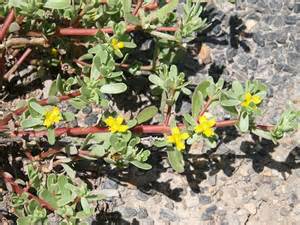A common spring weed, Pigweed competes for vital space, light and nutrients with vegetables, in horticulture, gardens, pastures and disturbed areas making it a troublesome weed for farmers and primary producers.
Pigweed is also a concern to vineyard owners, as the weed carries the Xylella Fastidiosa disease which will infect vines and prevent water from being drawn from the soil and the vine will eventually wither and die. Chardonnay and Pinot grapes are most susceptible to this disease and have no natural defence to it.
For livestock farmers, Pigweed can also cause nitrate and oxalate poisoning if the growth conditions are right and hungry sheep and cattle graze upon the succulent stems of the plant.
Found throughout Australia, Pigweed is an annual plant that completes its lifecycle in just one year. Characterised by its fleshy stems growing up to 25 cm along the ground and yellow flowers with small petals that appear in August through March, Pigweed also has a thickened Taproot system.
Most pigweeds grow into large, erect-to-bushy plants, 2–7 feet in height, with simple, petiolate stalked arranged alternately on stems. Leaf blades are generally oval-to-diamond shaped, and 2–6 inches long. Prostrate pigweed forms a low, spreading mat, with smaller leaves that are distinctly notched at the tip
Pigweeds thrive in hot weather, tolerate drought, respond to high levels of available nutrients, and are adapted to avoid shading through rapid stem elongation. They compete aggressively against warm season crops, and reproduce by prolific seed production.
Once it is well established, Pigweed is often difficult to control and can easily recover from disturbances such as clipping and trampling, and will rapidly produce axillary flower clusters. Control at early growth stages is essential to prevent reductions in crop yield. Pigweed can be controlled by most pre-emergence herbicides used for broadleaved weeds. Postemergence applications of 2,4-D, dicamba, mecoprop, bromoxynil, or atrazine are also effective on Pigweed.
Apply your chosen herbicide with a powerful engine driven spray unit and ensure that you cover the foliage of each plant. For this, ensure that your spray unit provides a powerful stream of herbicide with a strong spray nozzle as any missed plants can easily cause infestations to flare up again. Repeat treatments are advised for Pigweed infestations to prevent the plant from re-establishing itself.
For more information on suitable spray equipment for tackling Pigweed, click here or call 1800 011 000 for help and advice from a member of the Rapid Spray team.



